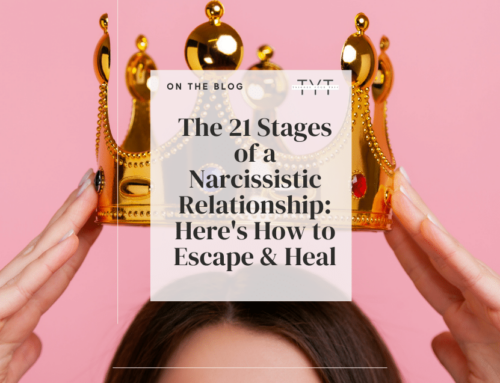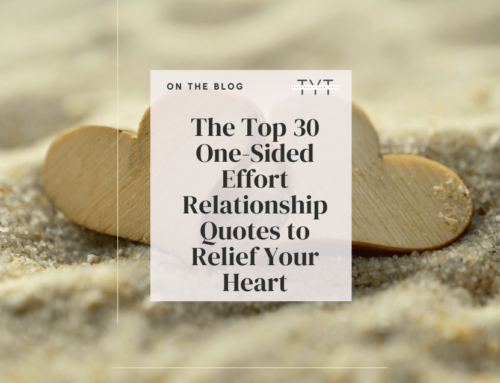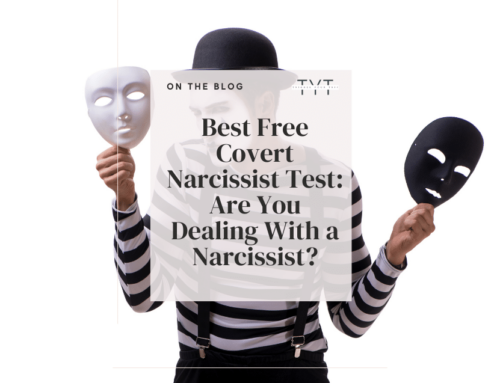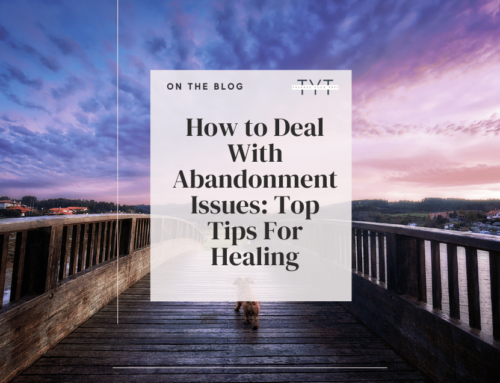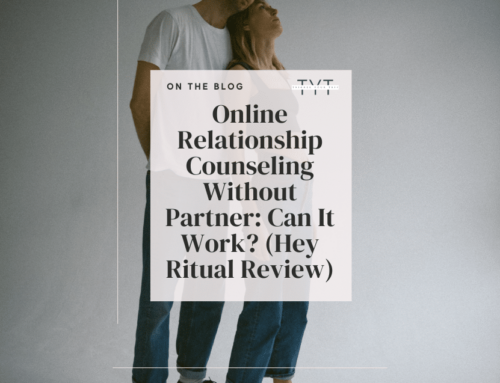Navigating an anxious-avoidant relationship is like solving a complex puzzle with missing pieces. It’s a dance of push and pull, love and fear, desire for closeness, and craving for independence. I know this all too well because I’ve been on that rollercoaster ride.
In my wellness journey, I discovered that being an anxious partner can be overwhelming, even for someone with a secure attachment. The constant need for reassurance, the fear of abandonment, and the emotional rollercoaster can affect both your well-being and your partner’s.
However, if you’re willing to learn, grow, and better yourself, you can find a path through the chaos. There is hope, even if you love an avoidant person. This article is a culmination of my personal and client experiences, research, and the wisdom of relationship experts.
It’s not another article on how to heal anxious or avoidant attachment style, but rather, a detailed guide for those trapped in this enigmatic dynamic of the anxious-avoidant relationship.
I’ll share the lessons I’ve learned, the strategies that have worked for me, and the insights that have helped me forge a healthier and more fulfilling connection with my avoidant partner. Whether you’re the anxious or avoidant one, these tips are designed to help you find a way to a happier, more harmonious bond by developing empathy towards your partner without satisfying your needs.
Join me on this journey as we unravel the complexities of anxious-avoidant relationships and discover the keys to lasting love and happiness.
Attachment Theory And The Various Attachment Styles
Attachment theory, developed by John Bowlby and further expanded upon by Mary Ainsworth, is a psychological framework that explains how individuals form emotional bonds or attachments to others, particularly during infancy and early childhood, and how these early attachments shape their interpersonal relationships throughout adult life.
Secure Attachment Style
Individuals with a secure attachment style are characterized by their ability to form healthy and balanced relationships. They typically had caregivers during childhood who were consistently responsive to their emotional needs, creating a strong foundation of trust and security. Estimates suggest that 50% of the total population is secure.
In adulthood, those with a secure attachment style are comfortable with both physical intimacy and independence, striking a harmonious balance in their romantic relationships. They are confident in their self-worth, tend to communicate openly and honestly with their partners, and can offer and receive support, making them well-equipped for stable, fulfilling, and long-lasting connections with others.
Anxious – Preoccupied Attachment Style
Individuals with an anxious attachment style often need closeness and reassurance in their intimate relationships. According to research, this attachment style typically develops when caregivers are inconsistent in responding to their emotional needs during childhood, and we see it in 20% of the population.
Adults tend to be overly preoccupied with their relationships, constantly seeking validation and fearing rejection or abandonment. They may display clinginess, jealousy, or insecurity, and their emotional state can fluctuate significantly based on their partner’s actions or responses. Despite their strong desire for connection, they may struggle with managing their own anxiety within relationships.
Read More: The Most Common Anxious Attachment Triggers & How To Handle Them
Dismissive Avoidant Attachment Style
Individuals with a dismissive-avoidant attachment style often prioritize independence and self-sufficiency in their relationships. This attachment style typically develops when caregivers are emotionally distant or unresponsive during childhood. According to research, 25% of the total population are avoidants.
As adults, they tend to be uncomfortable with emotional intimacy, often avoiding deep emotional connections and downplaying the importance of a healthy relationship in their lives. They may have difficulty expressing their own feelings and may appear emotionally detached or aloof to their partners.
While they value self-reliance, this attachment style can make it challenging to fully engage in emotionally fulfilling relationships.
Fearful Avoidant Attachment Style
The fearful-avoidant attachment style, also known as disorganized attachment, is characterized by a conflicted relationship approach and is rarer than all the other attachment styles, seen only at 5% of the total population. Individuals with this attachment style often have experienced inconsistent and frightening caregiving during childhood, usually in the form of trauma or abuse.
As adults, they have a deep desire for emotional closeness and intimacy but are simultaneously fearful of getting too close to others. They may exhibit erratic behaviors, swinging between seeking connection and pushing people away as they grapple with intense inner conflict and anxiety about getting hurt.
The disorganized attachment style can lead to challenging and unpredictable relationship dynamics as they wrestle with their contradictory emotional needs and fears.
Read More: The Most Common Avoidant Attachment Triggers & How to Handle Them
What Is An Anxious-Avoidant Relationship?
An anxious-avoidant relationship, often called a “push-pull” situation or an anxious-avoidant trap, is a complex and challenging interpersonal dynamic characterized by two individuals with contrasting attachment styles, usually the anxious preoccupied with the dismissive avoidant attachment style.
On one side, the individual with an anxious attachment style craves emotional closeness, reassurance, and constant connection with their partner. They often experience high levels of anxiety and insecurity in the relationship, fearing abandonment or rejection.
Conversely, you have an individual with an avoidant attachment style who values independence, self-sufficiency, and emotional distance. They tend to be uncomfortable with emotional intimacy and may often seek space and distance from their partner.
The primary challenge in an anxious-avoidant relationship stems from the fundamental clash between these two attachment styles. The anxious partner’s relentless pursuit of closeness and reassurance can activate and trigger the avoidant partner’s instinct to withdraw and create emotional distance. This situation enables a cycle of pursuit and avoidance, where the anxious individual becomes increasingly dramatic and clingy while the avoidant individual becomes even more distant and aloof.
Moreover, communication can be a major hurdle. Anxious individuals may struggle to express their needs and fears effectively, often resorting to emotional outbursts, overreaction, or clinginess.
On the other hand, avoidant individuals may have difficulty acknowledging or expressing their emotions, leading to a lack of emotional connection. Their withdrawal is often perceived as “indifference” by their anxious partner, and thus, it enhances their anxiety and feelings of unworthiness.
Read More: How Much Is Couples Therapy? (With Best Virtual Alternatives)
Insecure Attachment Pairings
What happens when individuals with insecure attachment styles pair with each other?
Anxious Attachment Style Pairing
When two individuals with anxious attachment styles enter into a romantic relationship, it often results in a complex and emotionally charged dynamic.
Initially, there can be an intense and passionate connection. Both partners may revel in the emotional intensity and constant affirmation of their love.
However, this enthusiasm can quickly turn into a double-edged sword. Both individuals become highly attuned to any perceived threats to the relationship by their anxious partner, no matter how minor. This hypersensitivity can lead to frequent misunderstandings and conflicts, as both anxiously attached partners may interpret innocent actions or statements as signs of rejection.
Fear of abandonment is a central theme in these relationships. Both partners may grapple with a deep-seated dread of being left alone, which can lead to a cycle of seeking constant reassurance and validation from each other. This mutual dependency can make maintaining individual identities and personal growth outside the relationship challenging.
Consequently, these relationships often exhibit a pattern of extreme anxiety. In couples with two anxious individuals, both partners use hyperactivating strategies to regulate their distress; they call attention to their distress, express heightened distress, and persistently turn to their partner for comfort and reassurance, which can create a tumultuous emotional rollercoaster.
However, it is possible for that relationship to work when the anxiously attached person learns to communicate the distress effectively.
Read More: Emotional Permanence Explained & 5 Top Tips on How to Cope
Anxious Preoccupied Attachment Style – Anxious Avoidant (Disorganized) Relationship Pair
As mentioned above, the anxious-avoidant attachment style (or disorganized) is often characterized by simultaneously fearing and needing intimacy.
When an anxious-preoccupied individual pairs with a disorganized individual, it often results in a tumultuous and potentially unstable relationship.
An anxious-preoccupied person seeks constant reassurance and emotional closeness, while a disorganized individual may have unpredictable and chaotic behavior due to unresolved trauma or attachment issues. The disorganized partner’s occasional desire for closeness and intimacy might offer a quick fix to the bond before it gets lost in the chaos again.
This pairing can lead to a push-pull dynamic where the anxious-preoccupied partner seeks intimacy while the disorganized partner may struggle with inconsistency and emotional volatility.
Such a relationship may be marked by confusion, emotional distress, and challenges in establishing a secure and stable connection unless both individuals actively work on their attachment issues through therapy or self-awareness.
Read More: Free Borderline Personality Disorder (BPD) Test & How to Spot High-Functioning BPD
Disorganized with Disorganized Pair
When two individuals with disorganized attachment styles form a relationship (which is extremely rare), it can be extremely unpredictable and potentially turbulent.
As mentioned, disorganized attachment often stems from unresolved trauma or inconsistent caregiving in childhood, leading to erratic behaviors and emotional reactions. In such a pairing, both partners may struggle with emotional regulation, interpersonal boundaries, and trust issues. The relationship may become a chaotic blend of push-pull dynamics, with neither partner consistently providing the emotional stability the other needs.
Unless both individuals work on healing their attachment wounds through therapy or self-awareness, this type of relationship can be marked by confusion, conflict, and difficulty establishing a secure and nurturing bond.
Dismissive Avoidant with Dismissive Avoidant Pair
When two individuals with dismissive-avoidant attachment styles come together in a relationship, it can lead to a dynamic characterized by emotional distance and independence.
Both partners may prioritize their autonomy and self-sufficiency, avoiding emotional vulnerability and intimacy. While they may appreciate the lack of emotional demands, the relationship may lack deep and intense emotional connection. Both partners usually interpret that as “lacking chemistry” and don’t get the relationship too far, or they keep it casual.
The sense of emotional detachment makes it challenging to address emotional needs or conflicts or to feed the necessary “glue” that could keep both partners together.
To make this relationship work, both individuals must consciously work on being more open, acknowledging their attachment style, and fostering emotional intimacy, which can be difficult given their natural tendencies to avoid emotional closeness.
Read More: The 35 Premarital Counseling Questions to Ask Before Committing
Why Is The Anxious-Avoidant Relationship The Most Destructive Attachment Pair?
The anxious and avoidant relationship is often considered one of the greatest challenges in romantic bonds due to the inherent clashes in attachment styles. Firstly, as roughly 20% of the total population is anxiously attached, and 25% are dismissive avoidants, we can understand why the anxious-avoidant relationship dynamic is so common.
Here are three key reasons why this pairing can be particularly problematic:
1) Opposing Attachment Needs: Anxious individuals seek high levels of closeness and emotional intimacy in their relationships, often displaying clinginess and fear of abandonment.
In contrast, avoidant individuals value their independence and tend to be uncomfortable with too much emotional closeness.
This fundamental mismatch in attachment needs can lead to a cycle of push-pull dynamics, where the anxious partner’s pursuit triggers the avoidant partner’s need for space, causing anxiety and frustration.
2) Communication Breakdown: Effective communication is vital in any relationship, but both partners face significant challenges in an anxious-avoidant relationship.
Anxious individuals may struggle to express their needs without appearing demanding, dramatic, or overly emotional, while avoidant individuals and their discomfort with intimacy prevents them from opening up and being kind and affectionate while expressing their need for space.
This communication barrier can lead to misunderstandings, resentment, and feelings of inadequacy on both sides.
3) Reinforcing Negative Patterns: Anxious avoidant attachment styles often stem from past experiences and can become self-reinforcing. Anxious individuals may interpret the avoidant partner’s need for space as rejection and as a self-fulfilling prophecy that they’ll be abandoned, triggering their anxiety further.
Consequently, the avoidant partner may withdraw as a response to the anxiously attached person. It’s prevalent for the avoidants to eventually give up on their anxious partners, often thinking they can’t meet their needs and aren’t enough for them. This behavior is driven by fear and aims to protect their independence, perpetuating a destructive cycle of emotional turmoil and distance.
The anxious-avoidant cycle is challenging because it involves conflicting attachment needs, communication difficulties, and a tendency to reinforce negative patterns. While such couples can thrive with self-awareness, therapy, and effort, navigating these inherent challenges can be emotionally draining and often results in emotional turmoil, break-ups, or divorces.
Read More: Online Relationship Counseling Without Partner: Can It Work? (Hey Ritual Review)
Anxious Avoidant Relationship Translation
In healthy relationships, where couples can healthily and effectively communicate their needs and form a secure attachment, you don’t usually see partners being lost, as I like to say, “in translation.”
The problem with the anxious-avoidant relationship translation is that both partners interpret each other’s activated attachment style as a self-fulfilling prophecy to validate their insecurities. For example, while both partners inherently crave a secure and healthy pattern of intimacy and love, their own attachment style, which is insecure, makes them believe they are unworthy of that love.
For example, in the first sign of an avoidant partner pulling away, the hyper-sensitivity of the anxiously attached person translates it as “something is wrong” and tries to regain calmness by pursuing closeness, usually in unhealthy ways (unlimited calls and messaging, clinginess, overreactions, threatening to break up). While a person with a secure attachment might translate and understand this behavior for what it is (insecurity, a desperate need for love, etc.) and usually responds and comforts the anxious, the avoidant partner gets intimidated, scared, and, thus, further pushed away.
The anxious partner activates the avoidant’s attachment style, who feels threatened by their needs and “runs away” as the clingy behavior requests intimacy from the avoidant partner (and that’s something all avoidants are uncomfortable with).
In addition, in extreme cases, the anxious partner might “threaten” the avoidant that it’s better to end things only to get their response and not because they mean it, which only worsens the situation. These threats validate the avoidant’s shadow childhood core beliefs that they aren’t enough, they can’t be loved, and thus, they don’t need love. Their independence can’t hurt them, and that’s what they are trying to protect at all costs.
Let’s observe the anxious-avoidant relationship thoroughly in the stages below.
Read More: Reactive Abuse & Narcissism: What Is It & How To Deal With It
Anxious Avoidant Trap In Stages
Stage 1: Extreme Attraction
The first stage of an anxious-avoidant relationship starts with their encounter. The two individuals are often extremely drawn to each other due to a complex interplay of needs and insecurities.
The anxious seeks emotional closeness and validation, which the avoidant initially provides in a tantalizing and playful manner, just enough to lure them in but leave them hanging, triggering the anxious person’s insecurities.
Meanwhile, the avoidant is attracted to the anxious individual’s emotional intensity, often thinking that they have the necessary passion for being interesting and “crazy good.” At the same time, the dramatic behavior of the anxious individual provides a sense of validation for the avoidant’s independence and self-sufficiency.
The initial stage of attraction can create a powerful but unsustainable dynamic, as the anxious person’s need for constant reassurance clashes with the avoidant’s need for space, leading to a cycle of push-pull behavior that can ultimately strain the relationship.
Read More: 5 Books on Attachment Theory Explain Your Obsession Over Certain People
Stage 2: Honeymoon
After the initial attraction stage, both individuals find each other interesting enough to attempt a relationship. That’s where the attachment comes in.
I call this stage the honeymoon because although the couple might subtly understand their needs, communication, and intimacy differences, they still take the ride and let go, blindly following their passion and enormously excited by the novelty of their absorbing bond.
The dopamine hits that the anxious feels, caused by the avoidant’s behavior, are the hooks and the permanent pursuit, translated in the anxious mind as “love, passion, attraction.” They also tend to compare their current relationship to previous ones, often thinking how boring their love life was in the past.
As for the avoidant, they consider the persistence and pursuit of the anxious one as a true and intensive interest. They find the anxious partner’s emotional force fascinating and the occasional jealousy, passive aggressiveness, or “accidentally-flirting-with-someone-else-cause-I-don’t-get-enough-attention” scenes intriguing and charming.
Both partners invest their energies in each other just enough to get attached and fully immersed in their new gripping reality.
Stage 3: Intimacy clash
However, after the initial honeymoon stage wanes, a fundamental conflict emerges.
The anxious partner craves additional emotional closeness, often becoming clingy or demanding with non-sense requirements to satisfy their need for reassurance and connection. The present, intense, satisfying moments with their avoidant partner, often experienced in the honeymoon stage, don’t seem to matter anymore. Suddenly, they are preoccupied with the future. “When will you say “I love you”? When am I going to meet your parents? When are we going to make things official to our social accounts”?
Conversely, the avoidant partner instinctively withdraws when their autonomy feels threatened, leading to distancing behaviors and emotional detachment. They are unable to understand or explain what went wrong, but they suddenly feel uncomfortable with their partner and use distancing behaviors (prioritizing alone time or moments with friends and family without including their partner, not initiating calls or texts, and even flirting or distracting themselves with other potential flings.)
Read More: The Top 21 Questions For A New Relationship To Develop Intimacy
Stage 4: Withdrawal And Pursuit Loop
The opposing dynamic of an intimacy clash creates a cycle of tension and frustration, where the anxious partner escalates their pursuit, triggering the avoidant partner’s retreat, perpetuating a painful push-pull cycle, the withdrawal and pursuit loop.
Even if the couple attempts to discuss it and reach common ground, the damage has already been done. In the next pattern of withdrawal and pursuit, the painful feelings will re-emerge, eventually draining the emotional energy of both individuals.
The anxious-avoidant dance is a loop in which the person with the anxious attachment style makes one step in front, and the avoidant partner makes one hundred steps back.
This ongoing clash can erode trust, exacerbate insecurities, and strain the relationship, making sustained intimacy and satisfaction a significant challenge.
Stage 5: Break or Make
Unless both partners decide to compromise, practice self-reflection, learn to communicate, and satisfy each other’s needs, which is almost impossible without the help of a professional or extreme individual self-therapy, there is one possible ending.
After countless threats on the anxious partner’s side that they will leave the relationship (without actually doing it), the avoidant one usually calls it quits. Their avoidance of intimacy and inability to meet their partner’s emotional needs can lead them to end the relationship to regain their sense of freedom, peace, and emotional distance.
I still remember when my avoidant partner broke up with me after everything I went through to make things official. His text on my screen, “I don’t think we’re able to be together, no matter how much you love me or I love you, because we’re like two chemists who react when they come together, and I can’t match your standards” will forever be printed on my subconscious (no matter the fact that we have kids together now.)
Read More: The 150 Top Shadow Work Prompts to Unblock Your Potential
Can Anxious and Avoidant Relationships Work?
An anxious-avoidant relationship can potentially work, but it requires considerable effort and self-awareness from both partners. It’s essential for the anxious person to learn to manage their insecurities, anxious behaviors, and need for constant reassurance, while the avoidant person should strive to communicate their need for space and intimacy fears openly.
Anxious and avoidant people should consider couples therapy, which can be beneficial to navigating these challenges and adult relationships overall. Building a secure attachment, where both individuals respect each other’s boundaries while offering emotional support, is key to success.
However, success depends on the willingness of both partners to understand and address their insecure attachment, fostering a more balanced and healthy dynamic.
Read More: What Kills Long Distance Relationships? (And How to Make It Work)
15 Proven Ways Anxious Avoidant Relationships Can Work
After everything you’ve read, you’re right to question whether an anxious-avoidant relationship can successfully work. And while many therapists, coaches, and experts believe that in an anxious-avoidant relationship cycle, you’ll never have both partners mostly satisfied, I disagree.
As an anxious person, I managed to create a happy family with my avoidant partner and trust me when I say that not all days are sunshine and rainbows, but overall, I’m happy and satisfied. After 5,000 miles apart, a language barrier, different countries, cultural backgrounds, intense breakups, a 5-year on-and-off relationship, AND our attachment clash, I consider my anxious-avoidant case pretty successful.
An anxious-avoidant pair can create a healthy and successful relationship by incorporating the following strategies:
Communication and Understanding
Open Dialogue
Encourage open and honest conversations about each other’s attachment styles, fears, and needs to reduce misunderstandings. This communication creates opportunities for compromise, promoting a healthier dynamic where both individuals can work together to meet each other’s emotional needs while respecting their autonomy.
Educate Each Other
Educating each other about attachment styles and anxious and avoidant tendencies can increase awareness and empathy in an anxious-avoidant relationship. It helps both anxious and avoidant partners understand their behaviors and reactions, reducing blame and fostering acceptance.
The acquired knowledge enables them to proactively adapt, provide emotional support, and find a middle ground, improving the relationship’s overall dynamics.
Active Listening
Practicing attentive listening to validate each other’s emotions and concerns can create a safe space for partners to express their feelings. It promotes empathy and validation, helping the anxious partner feel heard and the avoidant partner feel understood. This fosters connection and builds trust, easing the tension and conflicts often seen between anxiously attached and avoidant partners.
Read More: The 7 Stages of Trauma Bonding; Here’s Why You Can’t Leave
Building Trust
Consistency
The avoidant partner can try to be more reliable and predictable, gradually increasing trust. Equally, the anxious partner can avoid the threats and jealousy scenes. These behaviors help reduce the anxious partner’s uncertainty and anxiety while reassuring the avoidant partner that their space and boundaries are respected.
This stability fosters trust, emotional security, and a more harmonious connection between the two individuals.
Space with Reassurance
Allow the avoidant partner space while reassuring the anxious partner’s emotional security. That involves granting the avoidant partner the autonomy they desire while offering periodic emotional support and reassurance to the anxious partner.
With this balance comes respect for both individuals’ needs, reducing conflict, fostering a sense of security, and potentially creating a healthier, more sustainable relationship dynamic.
Read More: The 43 Best Spiritual Healing Quotes for Instant Self Therapy
Establishing Boundaries
Mutual Understanding
Defining personal boundaries that respect the avoidant’s need for autonomy and the anxious partner’s need for reassurance ensures that both partners meet their emotional needs. This agreement allows the anxious partner to feel secure in the relationship while granting the avoidant partner the required space, promoting harmony and reducing conflicts.
Respect Individuality
When anxiously attached and avoidant partners can respect each other’s unique traits and preferences without judgment, they can maintain their independence and identity, reducing the anxiety and resistance often associated with their insecure attachment styles. This fosters a more balanced and harmonious connection, enhancing the relationship’s chances of success.
Read More: 9 Top Relationship Boundaries List Examples & How to Say “No“
Compromise and Balance
Meet in the Middle
When you strive to balance the avoidant partner’s need for space and the anxious partner’s need for closeness, both partners try to balance intimacy and independence. Meeting in the middle in an anxious-avoidant relationship involves compromise and flexibility, and it can accommodate the anxious partner’s need for connection and the avoidant partner’s need for space, creating a more harmonious and sustainable relationship.
Scheduled Quality Time
Designating specific quality time (like one night per week) to address the anxious partner’s needs while respecting the avoidant partner’s boundaries can establish predictability and ensure regular emotional connection.
It allows both partners to anticipate and plan for intimate moments, reducing the anxious partner’s insecurity and the avoidant partner’s reluctance. This structured approach fosters a sense of stability and can enhance the relationship’s overall health.
Mutual Personal Growth
Self-Awareness
Both partners can work on self-awareness to recognize and manage their attachment triggers, patterns, and behaviors.
Self-awareness enables both partners to recognize their attachment styles, triggers, and insecurities. The insights they gain help them manage their behaviors, communicate more effectively, and empathize with each other’s needs.
Support for Improvement
Encouraging each other’s efforts to overcome negative patterns by seeking therapy or self-help resources is extremely valuable. Support for improvement in an anxious-avoidant relationship involves both partners actively working on their attachment styles and addressing their respective challenges.
This mutual commitment to personal growth and change can create a more secure and loving bond. It helps build trust, strengthens communication, and leads to a healthier relationship dynamic.
Read More: 140 Top Affirmations for Self-Love Help You to Build Confidence
Emotional Support
Patience
The anxious partner can practice patience as the avoidant partner learns to express emotions and offer comfort. Patience also means tolerating periods of distance or emotional intensity without judgment.
Having patience allows both individuals to gradually build trust and bridge the gap between their attachment styles, fostering a more harmonious and lasting relationship.
Shared Activities
Engage in activities that bring joy and positive emotions to strengthen the emotional connection. Shared activities provide a neutral ground where both partners can embrace mindfulness and bond without triggering their attachment insecurities.
Engaging in enjoyable hobbies or interests together creates positive experiences, strengthens their connection, and fosters a sense of closeness, helping to mitigate the challenges posed by their contrasting attachment patterns.
Conflict Resolution
Calm Discussions
Approach conflicts calmly, focusing on solutions rather than blame, and jointly creating a safe discussion space is essential.
Calm discussions in an anxious-avoidant relationship facilitate productive communication without heightened emotions. They enable both partners to express their needs, fears, and boundaries rationally and respectfully.
This approach reduces conflict, fosters understanding, and encourages problem-solving, ultimately promoting a healthier and more secure connection between the individuals.
Compromise in Resolving
Both partners can learn to compromise during disagreements, acknowledging the valid concerns of each other’s attachment styles. Anxious partners can try to comprehend why their counterparts are emotionally unavailable, and equally, avoidant partners should make a conscious effort to take some extra steps to restore intimacy and resolve conflicts instead of withdrawing.
Remember, relationships require effort, understanding, and adaptability from both partners. While it may take time to navigate the challenges of an anxious-avoidant dynamic, a healthy and fulfilling relationship is attainable with patience and a commitment to growth.
Read More: Intrusive vs Impulsive Thoughts: Differences, Causes & How to Manage
The “Happily Ever After” Of My Anxious Avoidant Relationship
I won’t lie with this one; sometimes, I struggle with my partner’s avoidant behaviors and healthy communication. Although we both acknowledge we have different attachment styles, and I’m consciously working on my low self-esteem and past trauma through therapy, some days I find it extremely challenging to calm my nervous system and can’t help but wonder why I didn’t pick a secure partner instead.
Then, only after I self-soothe and shift to a gratitude mindset can I recognize all the reasons I picked my avoidantly attached partner. Relationships are never perfect; you might face worse challenges even with securely attached people. By implementing all the strategies above, I usually manage to have a satisfying relationship and commit to constant growth and change.
Do you have difficulty choosing a mental health professional? Can’t afford in-person couples or individual therapy?
This online therapy toolbox is more efficient and affordable than any other virtual therapy I’ve tried, including BetterHelp and Talkspace. It instantly matches you with a therapist and saves you hours of research for the right one (with unlimited daily messaging and support from your therapist). By leveraging the power of CBT (Cognitive Behavioral Therapy) -the most common psychotherapeutic approach for treating mental health problems- your therapist will guide you to a happier self through weekly sections, CBT worksheets, unlimited messaging, and daily worksheet replies. Bonus price for the fact that you can do your sessions wherever you are in the world and message your therapist anytime, daily.
Final Thoughts
Navigating an anxious-avoidant relationship may seem like a challenging journey, but with dedication, awareness, and effective strategies, it is possible to find happiness. This tested guide emphasizes the importance of self-awareness for both partners, enabling them to understand their attachment styles and insecurities. Open communication, patience, and mutual support are pivotal in fostering a healthy connection.
Embracing a balanced approach, where both intimacy and independence are respected, is key. Scheduled quality time and shared activities can create opportunities for bonding without triggering anxieties or avoidant behaviors. Furthermore, calm discussions and setting boundaries enable couples to address issues constructively, reducing conflicts and misunderstandings.
It’s essential to remember that progress may be gradual, and setbacks are part of the journey. The commitment to personal growth and the relationship’s improvement is crucial.
Ultimately, anxious-avoidant couples can rewrite their narrative with perseverance, empathy, and a willingness to meet in the middle.


